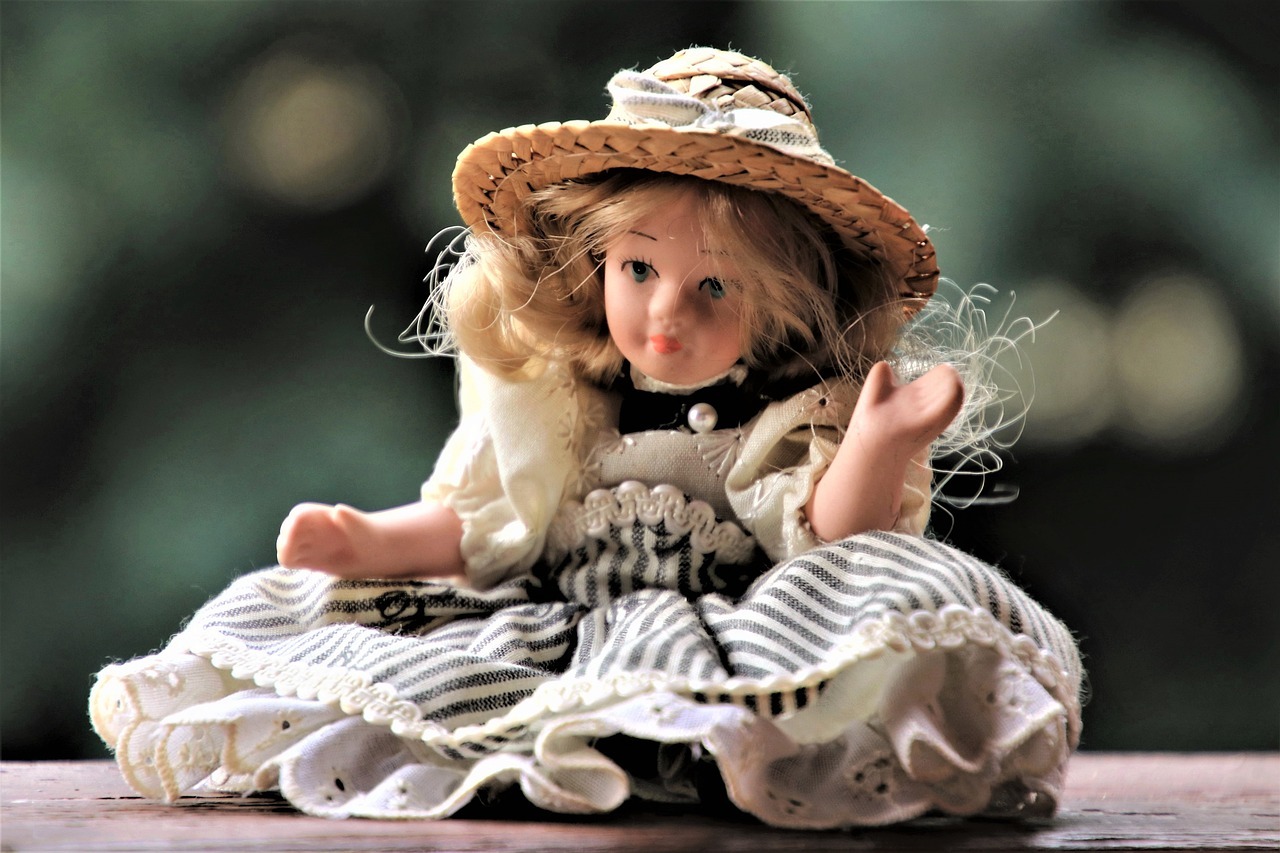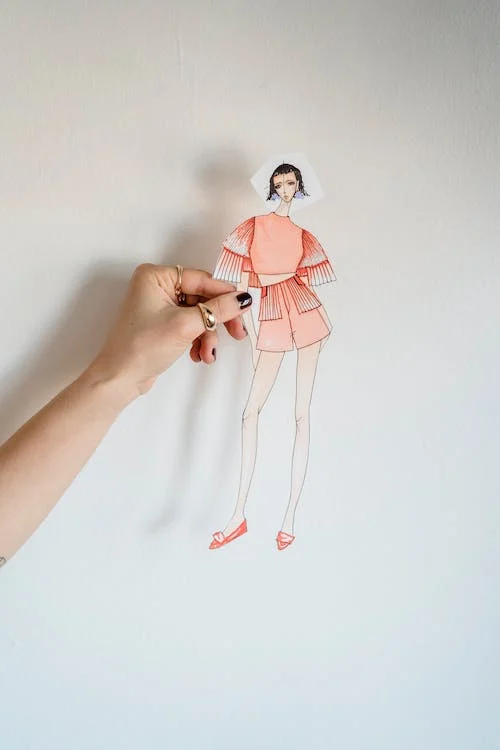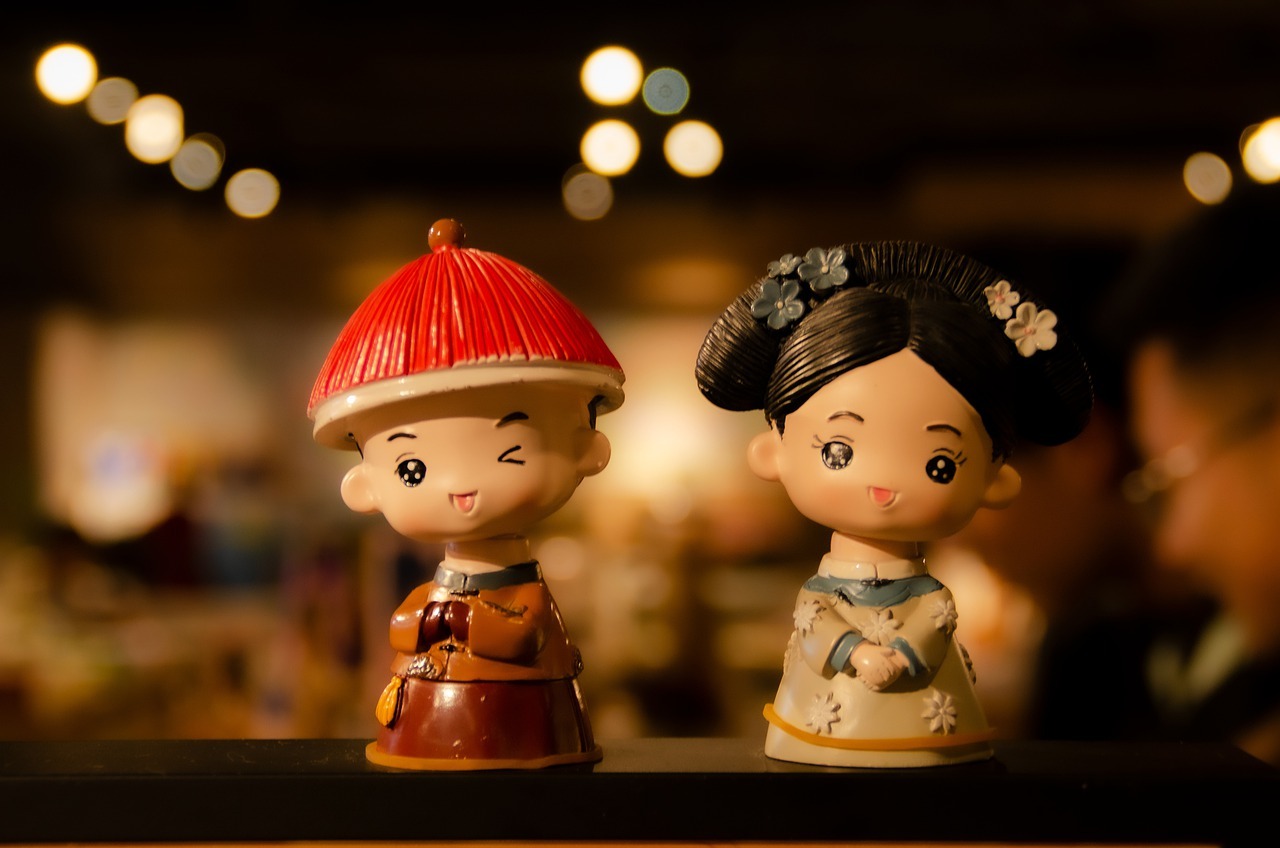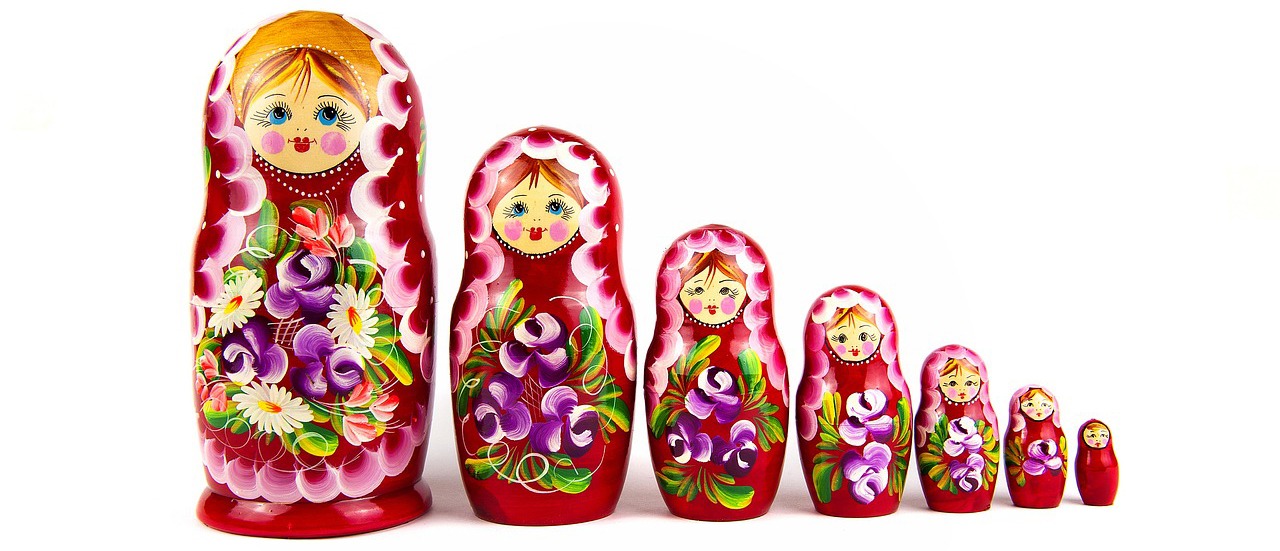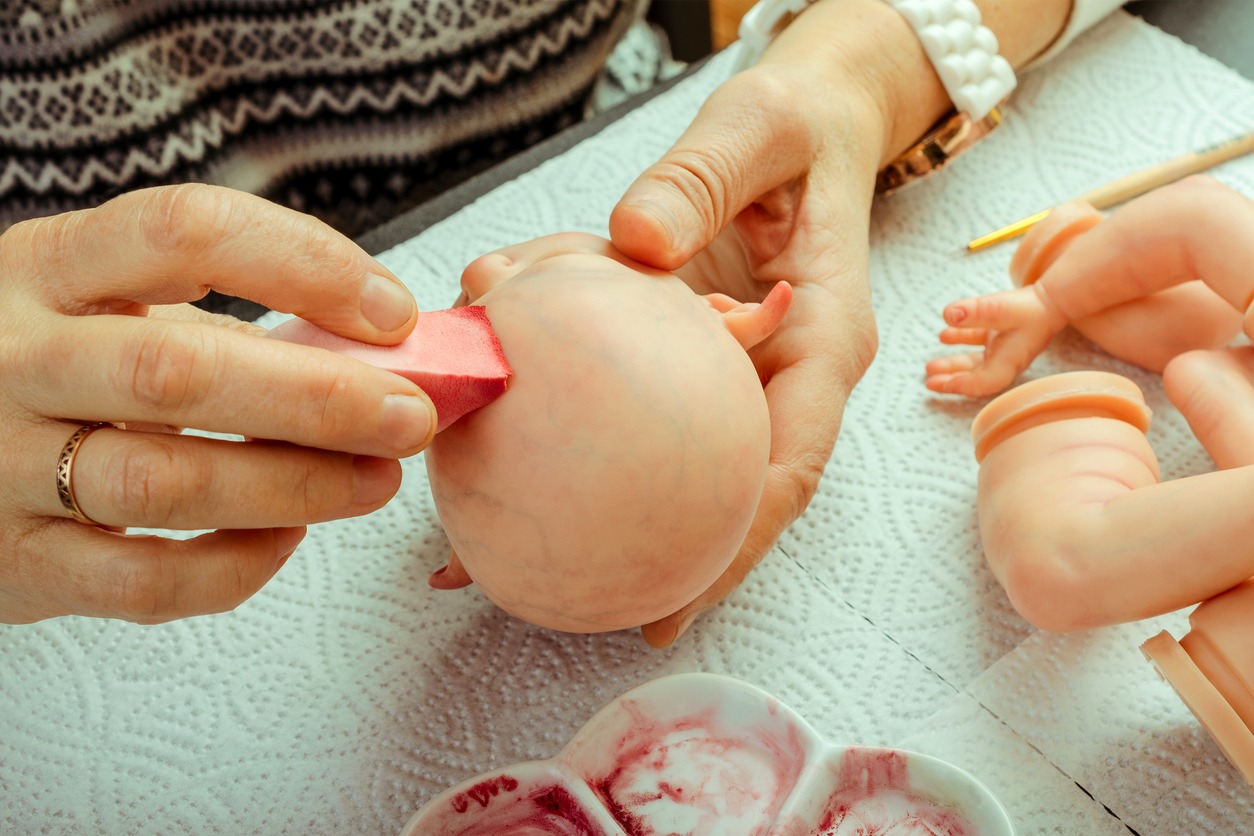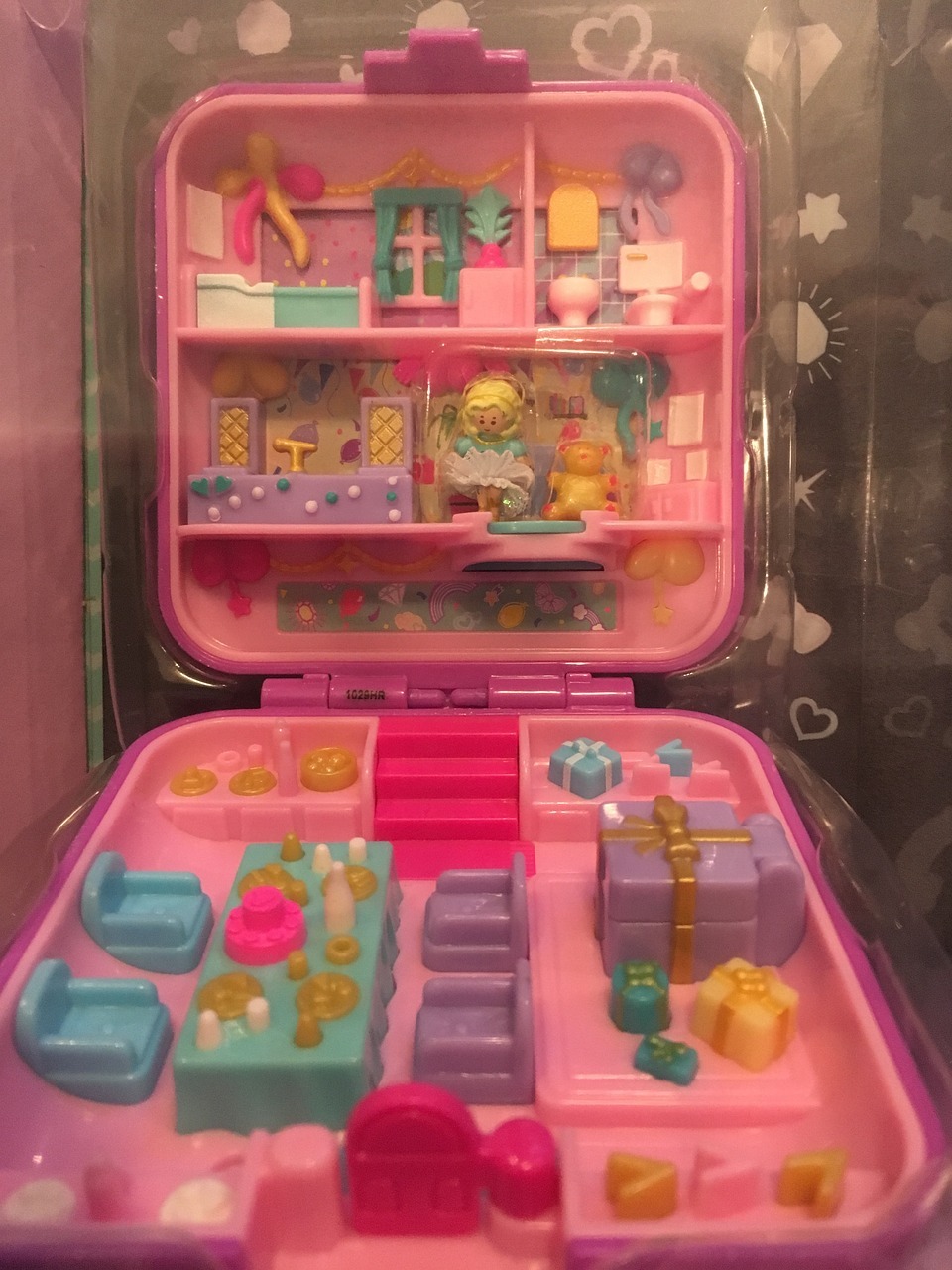Dolls are considered to be some of the most popular toys on the market, and their popularity hasn’t really decreased over the years. While there are some toys that are much more durable and have more features than dolls, there are still a lot of kids today, especially girls, who prefer the simplicity and cuteness of dolls compared to other toys. There are many types of dolls that have been developed and designed, and in this article, we will talk about those types and what makes them different from each other. So, here are the details about the different types of dolls that kids can enjoy playing with.
Paper Doll (1800s-)
The most affordable type of doll is the paper doll, which is a toy that is made of several pieces or sheets of paper or cardboard. These pieces could be the entire body of the dolls, as well as the clothes that are placed on top of the dolls. There are also paper dolls with individually moving arms, legs, and heads, and while paper dolls are mostly human in appearance, there are also others that can be a figure of an animal, a plant, or inanimate objects like tables, chairs, etc.
Paper dolls are believed to have been around for as long as paper, and one of the earliest forms of paper doll-making was origami, the ancient Japanese art of folding paper into different shapes that look like humans, animals, and plants. However, the first manufactured paper dolls that would serve as inspiration for modern paper dolls were produced by a London-based company called S&J Fuller in 1810. From then on, paper dolls became a popular toy because of its customizability and its affordability.
Here are a few paper doll books that you can buy if you want to have paper dolls in your collection or if you want to give them as a gift:
- Six Little Steppers Paper Dolls
- Louisa May Alcott’s Little Women: A Paper Doll Collectible
- Anne of Green Gables Paper Doll Book
Bisque Doll (1860s-)
Bisque dolls, also known as porcelain dolls, are a type of doll that is known for having a skin-like matte finish on their face and body. The skin of the bisque dolls is made of biscuit porcelain, a type of unglazed white porcelain that has a slightly rougher texture compared to glazed porcelain. However, there are versions of bisque dolls that have bodies that are made of cloth or leather for better durability.
These bisque dolls were quite popular in European countries from the 1860s up to the 1900s, although their popularity decreased in the late 20th century due to the emergence of celluloid dolls, which are considered to be more durable and suitable for kids to play with for years. However, by the 1980s, bisque dolls experienced a surge in popularity due to their collectability. In addition, there were also a lot of bisque dolls that became affordable due to Chinese toy factories producing porcelain dolls at inexpensive prices.
Take a look at the porcelain dolls below if you want to own one for your toy collection:
- Melody Jane Dollhouse Victorian Little Country Girl Miniature Porcelain People
- Melody Jane Dollhouse Victorian Parlour Maid Miniature Porcelain People
- Delton Products Red Sweater Porcelain Doll
China Doll (1850s-)
China dolls are a type of doll that is similar to bisque dolls, as they are also primarily made of porcelain. However, the difference is that china dolls are made from glazed porcelain, so they have a shinier appearance and a stickier texture compared to bisque dolls that are made of unglazed porcelain.
China dolls are believed to have been first produced in Germany during the 1840s. These china dolls would be produced in the said country until the 1930s, although their peak in popularity occurred between 1850 and 1890. Much like bisque dolls, china dolls would have porcelain bodies and are covered in clothes that are made from cloth or leather. Because of their fragility, china dolls would eventually fade into obscurity by the 1950s. Fortunately, china dolls experienced a resurgence in popularity in the 21st century, and this led Japanese and Chinese doll factories to create much more affordable iterations or versions of china dolls that are easier to buy and collect.
Matryoshka Doll (1890s-)
Matryoshka dolls, also known as nesting dolls, stacking dolls, or Russian dolls, are a set of dolls that are typically made of wood. All of the Matryoshka dolls, except the smallest ones, have an opening in the middle and they are all hollow inside. Because they are hollow, you will be able to stack a smaller doll inside a bigger doll, and the stack would become more complex as you continue to place the dolls inside their bigger counterparts. Whenever you buy a set of Matryoshka dolls, you will often only see the biggest doll, as the smaller dolls are stored inside it.
It is said that the first set of Matryoshka dolls was made in 1890 by Vasily Zvyozdochkin, a Russian woodturner and wood carver. The dolls that Vasily created were designed by Sergey Malyutin, a folk crafts painter that is in a country estate called Abramtsevo (and this place is now a museum reserve).
Check out these three Matryoshka dolls if you want to have a set:
- Starxing Russian Nesting Dolls
- JACE Wooden Yellow Duck Russian Nesting Dolls
- YAKELUS Russian Nesting Dolls
Plastic Doll (1950s-)
The most common type of doll today is the plastic doll, which is made of different kinds of plastic materials that are more durable and long-lasting than porcelain, wood, and other materials that were used in other types of dolls. Plastic dolls emerged when plastic materials became much easier to produce during the Industrial Era, which occurred in the 20th century. Because plastic is much more affordable to make compared to porcelain, plastic dolls became the cheaper option for toys compared to china dolls and bisque dolls.
Barbie is arguably the most popular plastic doll in history, and she was released on March 9, 1959, by Mattel, a toy company that is also known for manufacturing Hot Wheels toy cars. Barbie would become one of the best-selling toys of all time, and it would inspire countless plastic dolls that are released or sold over the years.
You can check out these Barbie doll products that are popular online:
- Barbie Birthday Wishes Doll
- Barbie The Movie Doll, Margot Robbie as Barbie
- Barbie Pop Star Fashion Doll
Action Figure (1960s-)
The action figure is a subtype of plastic dolls that are primarily designed to be enjoyed by boys, as the earliest plastic dolls are more catered towards girls. One of the earliest action figure toy lines is G.I. Joe, which was launched in 1964 and features toys that depict soldiers from the U.S. armed forces, namely the Action Soldier (Army), the Action Pilot (Air Force), the Action Marine (Marine Corps), and the Action Sailor (Navy). The name of the toy line was derived from the generic term used for US soldiers, G.I., as well as one of the most common names in the US, Joe.
The early versions of G.I. Joe action figures featured clothes that can be worn or taken off, but later iterations of the figures would have clothes that are already stuck onto the toys for cost efficiency. Because of the popularity of G.I. Joe in the 1960s, many toy companies would be inspired to create their own action figure toy lines. Hasbro, one of the biggest toy companies in the world, has been handling the marketing and manufacturing of G.I. Joe since its launch in 1964, and they have also expanded the franchise to include different toy or product lines. Because of G.I. Joe’s impact on the history and culture of the United States, the franchise was inducted into the National Toy Hall of Fame in 2004 and into the Pop Culture Hall of Fame in 2017.
If you want to get a G.I. Joe figure, you can check out the three products below:
- G.I. Joe Classified Series Stuart “Outback” Selkirk Action Figure
- G.I. Joe Classified Series Crimson Viper Action Figure
- G.I. Joe Classified Series Tunnel Rat
Stretchy Doll (1970s-)
The stretchy doll, as its name already suggests, is a type of doll that can be stretched since it is made of soft and flexible rubber. However, one of the earliest stretchy dolls called Stretch Armstrong was made from latex rubber that is filled with a gelled substance that has the same consistency as corn syrup. The gel inside the rubber allows the toy to become stretchy and soft while also being able to return to its original shape.
Stretch Armstrong was released in 1976 by Kenner, a toy company that is more known for producing classic Star Wars action figures. Stretch Armstrong would be discontinued in 1997. But in 2016, Hasbro revived the toy line by releasing the original 1976 version of Stretch Armstrong along with various new toys for the line.
Electronic Doll (1980s-)
The electronic doll is a type of doll that often speaks or moves on its own, thanks to the electronic and mechanical parts built into the interior of the doll. One of the first electronic dolls is Teddy Ruxpin, a teddy bear that has a built-in speaker that plays the audio from the tape cassette that is found inside its back. Besides talking and singing, Teddy Ruxpin can also move his eyes and mouth.
Teddy Ruxpin was released by a toy company called Worlds of Wonder in 1985, and due to its popularity, electronic dolls and toys became more common on the market during that time. Teddy Ruxpin served as an inspiration for many electronic dolls and smart toys that are still available today.
Reborn Doll (1990s-)
Reborn dolls are hand-made or mass-produced dolls that have the appearance of a baby. These reborn dolls are known for having “realistic skin,” and because of how realistic the dolls are, they are often mistaken for actual living babies. In order to achieve the realistic skin of reborn dolls, the doll makers would add multiple layers of pain on top of the vinyl material that is used for the bodies of the dolls. People can also create their own reborn dolls by buying kits that contain vinyl body parts and paint sets.
The origins of reborn dolls can be traced back to the 1990s in the United States. The term “reborning” was coined as a way to describe the process of enhancing or restoring vintage dolls to make them look more realistic. From the US, the art of reborning dolls has reached other countries like Canada and the United Kingdom, as well as regions like Latin America and Europe.
Check out these three reborn dolls that you can purchase online:
- Kaydora Reborn Baby Dolls, Lucy
- SCOM Lifelike Reborn Baby Dolls – Meadow
- Kaydora Reborn Baby Doll Boy
Pocket Doll (2000s-)
The pocket doll is a miniature doll that is significantly smaller than almost all plastic dolls. The small size of the pocket dolls allows kids to bring their dolls with them anywhere they go with ease. Conveniently, there were many pocket dolls in the 2000s that also came with a case where kids can place their dolls and the included outfits inside. The case can also serve as the doll house of the Polly Pocket dolls, as the case contains chairs, tables, beds, and other pieces of furniture.
Polly Pocket is arguably the most popular toy line when it comes to pocket dolls. Polly Pocket was created and designed by Chris Wiggs, a toy designer who developed the toy line for his daughter named Kate. A small toy company called Bluebird Toys in the United Kingdom would then acquire the license to produce Polly Pocket dolls. The Bluebird Toys version of the Polly Pocket toy line was manufactured from 1989 to 1998. Mattel acquired Bluebird Toys and the Polly Pocket license in 1998, and as of 2023, the said company is still producing Polly Pocket dolls.
Take a look at these three Polly Pocket products so that you will be able to see how different they are from the usual plastic dolls:
- Polly Pocket Compact Playset, Doggy Birthday Bash
- Polly Pocket Rainbow Dream
- Polly Pocket 2-in-1 Teddy Bear Purse Playset with Sleepover Theme
And these are some of the best types of dolls that became popular in different eras or decades. You can still purchase most of these doll types online and in select toy stores, so if you want to collect them, you will still be able to do so.

